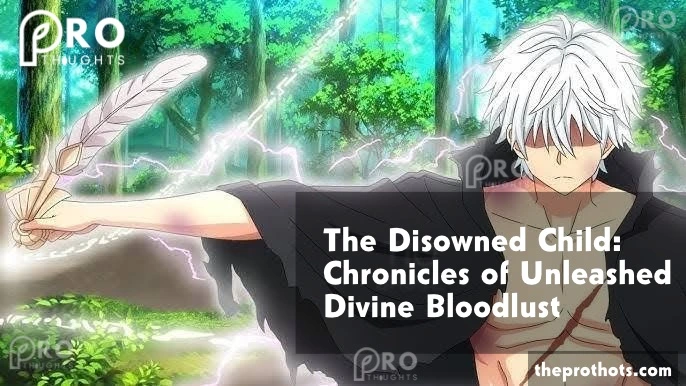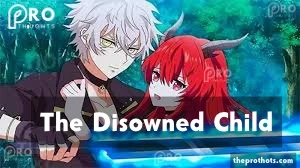The Disowned Child: Chronicles of Unleashed Divine Bloodlust

The Disowned Child: Chronicles of Unleashed Divine Bloodlust In a world where power and destiny intertwine, the story of a disowned child reveals the struggle between divine heritage and human challenges. This tale follows the journey of a young individual with a unique bloodline that connects them to ancient legends and formidable forces. However, with great power comes great responsibility, and the path is often fraught with pain and betrayal.

Understanding Divine Bloodlines
A divine bloodline refers to ancestry tied to gods, powerful beings, or extraordinary abilities. These bloodlines often come with unique traits or gifts that set individuals apart. In this story, the protagonist carries the burden of such a lineage, yet their family shuns them due to fear and misunderstanding.
Characteristics of Divine Bloodlines:
- Enhanced abilities: Strength, agility, or elemental control.
- Unique physical traits: Distinct markings, unusual eye colours, or heightened senses.
- Emotional connections: Often tied to strong feelings, such as anger or love, which can amplify their powers.
The Weight of Disownment
Being disowned can leave deep emotional scars. The protagonist feels rejected and alone, struggling with their identity. This section highlights the emotional journey of someone who is cast out from their family.
Common feelings of a disowned child:
- Loneliness: A sense of isolation from loved ones.
- Anger: Frustration towards those who rejected them.
- Confusion: Struggling to understand why they were cast aside.
Finding Strength in Solitude
While solitude can be painful, it can also be a source of strength. The protagonist learns to harness their abilities alone, discovering their potential without family support. This phase is crucial for personal growth and self-acceptance.
Tips for finding strength in solitude:
- Self-reflection: Take time to understand your emotions and thoughts.
- Skill development: Focus on honing your unique abilities.
- Building resilience: Learn to face challenges head-on.
The Call to Action
As the protagonist grows stronger, they realize their bloodline has a purpose. They must confront the dangers threatening their world, which leads to the awakening of their divine powers. This call to action serves as a turning point in their journey.
Signs of a call to action:
- Urgent circumstances: A crisis that requires immediate attention.
- Personal growth: Gaining confidence in abilities.
- A vision or dream: A guiding force that pushes them forward.
Confronting the Past
In their journey, the protagonist must confront their past and the family that disowned them. This moment is both painful and necessary for healing. It allows for reconciliation, understanding, and the chance to redefine relationships.
Steps to confront the past:
- Acknowledge feelings: Recognize pain and anger.
- Open communication: Share thoughts and feelings with family members.
- Seek closure: Find a way to move forward through forgiveness or acceptance.
The Nature of Bloodlust
In this context, bloodlust refers to a powerful desire that arises from the protagonist’s divine heritage. If not managed correctly, bloodlust can lead to destructive behaviors. Understanding the nature of this bloodlust is essential for the protagonist’s journey.
Best aspects of bloodlust:
Intensity: The strength of the desire can vary based on emotions.
Triggers: Certain events or feelings can provoke bloodlust.
Control: Learning to manage and channel this force is critical.
Mastering the Divine Powers
As the protagonist learns to control their bloodlust, they also uncover the true nature of their powers. This mastery is crucial for their survival and the protection of others. It requires discipline, training, and guidance.
Tips for mastering powers:
Practice regularly: Consistent effort leads to improvement.
Seek mentorship: Find someone experienced to guide you.
Set goals: Focus on specific abilities to develop.
The Role of Allies
Throughout the journey, the protagonist encounters allies who support them. These relationships are vital for emotional support and practical assistance. Allies can take various forms, from friends to mentors, each playing a role in the protagonist’s development.
Types of allies:
Friends: Offer emotional support and companionship.
Mentors: Provide guidance and knowledge.
Warriors: Join in battles and share skills.
Facing the Antagonist
Every hero must confront an antagonist who embodies the challenges they face. This confrontation tests the protagonist’s growth and will reveal their true strength. The antagonist often represents fears, doubts, or external threats.
Characteristics of a compelling antagonist:
Relatable motives: Reasons for their actions that resonate with the audience.
Complex personality: Depth that adds intrigue to their character.
A formidable challenge: Someone who truly tests the hero’s abilities.
The Balance of Power and Responsibility
As the protagonist gains more power, they must learn the importance of responsibility. Power can corrupt, and knowing when to use their abilities is crucial. This theme emphasizes the moral implications of having extraordinary gifts.
Important points about responsibility:
Ethical considerations: Understanding the impact of actions on others.
Self-discipline: Resisting temptations that come with power.
Community: Using abilities for the greater good.
The Journey to Redemption
Redemption is a significant theme in the protagonist’s story. They seek to prove themselves not only to their family but also to themselves. This journey is marked by trials, growth, and moments of self-doubt.
Steps to achieve redemption:
Accept past mistakes: Recognize and take responsibility for previous actions.
Make amends: Find ways to repair relationships or help those harmed.
Show growth: Demonstrating change through actions and choices.
The Final Confrontation
The story’s climax brings a final confrontation where all themes come together. The protagonist faces their greatest challenge, testing everything they have learned. This moment is filled with tension and emotion, showcasing the stakes involved.
Elements of a successful climax:
High stakes: The outcome affects many lives.
Emotional depth: Characters face personal fears and truths.
A resolution: The confrontation leads to a clear outcome, whether victory or defeat.
The Aftermath and New Beginnings
After the final battle, the protagonist reflects on their journey. They have grown significantly and learned valuable lessons about family, power, and identity. This section focuses on the aftermath and what lies ahead.
Considerations for new beginnings:
Rebuilding relationships: Taking steps to restore connections.
Continuing growth: Maintaining the lessons learned throughout the journey.
Embracing change: Accepting the new path and its challenges.
Conclusion
The story of the disowned child reminds us that everyone faces challenges on their journey. It highlights the importance of understanding one’s identity, the power of relationships, and the balance of strength and responsibility. Through their struggles, the protagonist learns that true power comes from within, and the bonds we forge can lead to healing and redemption.
